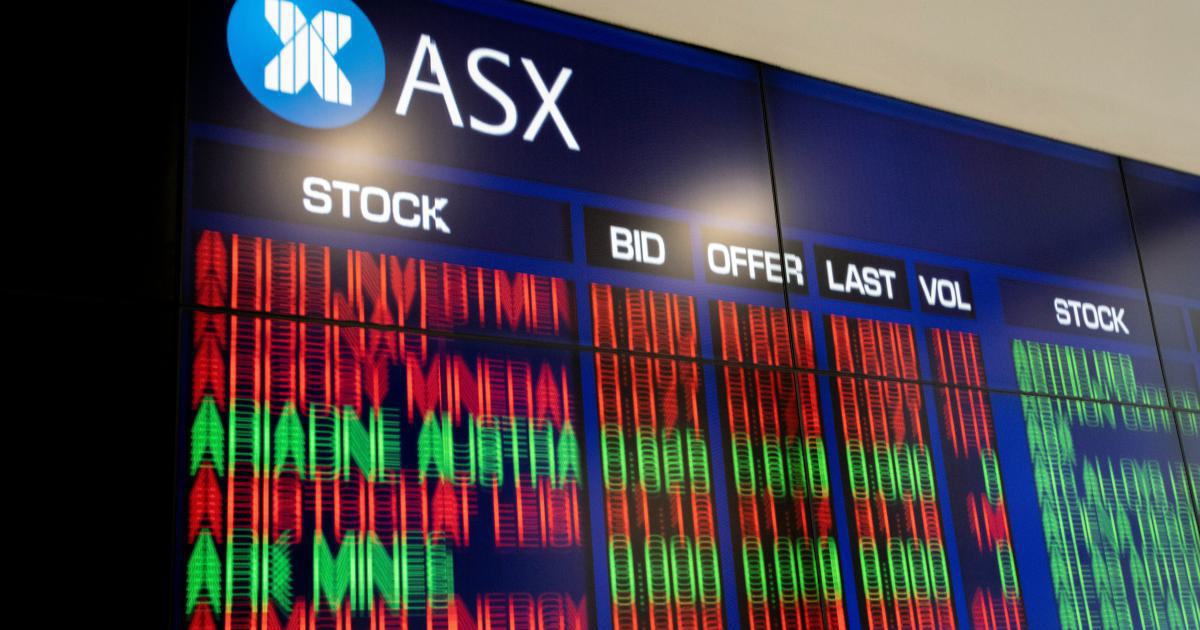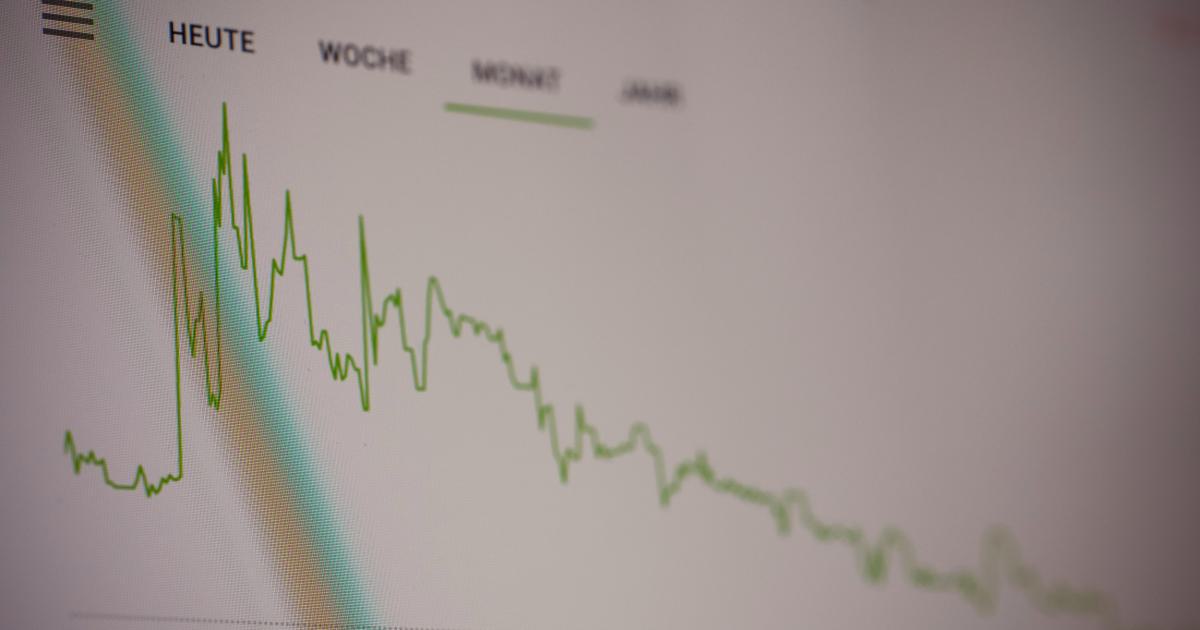Navigating Market Volatility: Leverage Event Analysis

In today's fast-paced financial markets, volatility is a constant companion. Investors and analysts alike seek to understand and respond to the rapid shifts in market behavior. One analytical method that has garnered attention is leverage event analysis—a critical tool that combines market indicators, risk assessment, and data analysis to decode complex market movements. This article delves into the intricate world of market volatility, exploring how leverage event analysis can provide insights into market behavior and help in crafting more effective financial strategies.
Understanding the Landscape of Market Volatility
Market volatility is often seen as a double-edged sword. On one hand, it presents opportunities for high returns; on the other, it brings significant uncertainties and risks. In essence, volatility quantifies the fluctuations in asset prices over time. A high degree of volatility implies that asset prices can change rapidly within a short period, meaning both potential gains and losses are amplified. Leverage event analysis, which we introduced earlier, is crucial in this context, as it provides a detailed map of events that can lead to or result from market volatility.
The concept of market volatility has evolved with the advent of modern trading technologies. Algorithms, high-frequency trading, and global interconnectedness have always played a role, but now they contribute to a market environment where unexpected events can send shockwaves across financial systems. Analyzing these events requires robust methodologies that can sift through vast amounts of data to identify the signals amid the noise.
When we discuss market volatility, it is essential to understand key drivers such as economic indicators, geopolitical events, and even investor psychology. For example, an interest rate announcement by a central bank may lead to sudden market movements as investors reposition their portfolios. Similarly, unexpected political events or global crises—think of events like the 2008 financial crisis or the sudden market changes witnessed during global pandemics—can trigger volatility across various asset classes.
The primary challenge for investors is not just to navigate volatility, but to leverage it. This is where the concept of leverage event analysis comes to the fore. By systematically analyzing events that have leveraged effects on the market, investors can better predict potential outcomes and employ strategies to mitigate risk or maximize returns. Leverage event analysis does not merely catalog market occurrences; it critically assesses the underlying mechanics and cascading effects that a single trigger can set in motion.
Historically, many investors focused on simplistic measures such as standard deviation and beta coefficients to gauge volatility. However, these metrics only scratch the surface. Modern leverage event analysis delves deeper, looking at micro-level market events—ranging from high-volume trades to sudden shifts in market sentiment—enabling a more nuanced understanding of the volatility curve.
Furthermore, the advent of big data analytics has revolutionized how we perceive and respond to market movements. Detailed order book analysis, sentiment tracking on social media platforms, and real-time risk assessments have added layers of complexity to our understanding of volatility. The integrative approach of leverage event analysis helps in identifying the build-up of pressure points within the market, which, when triggered by a specific event, can lead to far-reaching consequences.
Investors adopting this approach are better equipped to handle periods of turbulence. By recognizing patterns that typically precede large swings, they can adjust their portfolios, hedge against potential losses, and optimize entry and exit points in the market cycle. With an enhanced understanding of the interplay between liquidity, investor sentiment, and market news, leverage event analysis becomes an indispensable tool in the arsenal of both retail and institutional investors.

The Role of Leverage Event Analysis in Today's Market
What is Leverage Event Analysis?
Leverage event analysis is a specialized technique used to dissect and understand events that cause disproportionate responses in asset pricing. Essentially, it investigates the root causes and cascading effects of market events that exert a magnified influence on market dynamics. In a volatile market, events like unexpected earnings announcements, policy changes, or even social media rumors can trigger massive price swings. By isolating these events and examining their impact, analysts can forecast potential market directions more reliably.
One of the fundamental components of leverage event analysis is its focus on asymmetry. Unlike traditional event studies that assume a uniform response, this analysis acknowledges that market reactions are rarely proportional to the initial push. Small perturbations can sometimes trigger outsized responses due to underlying market conditions such as liquidity constraints or prevailing investor sentiments. This approach often involves complex statistical models and historical comparisons to ascertain baseline behaviors and identify deviations indicative of a leverage event.
An advantage of using leverage event analysis is its ability to integrate both quantitative and qualitative data. For instance, while statistical models can capture changes in volatility patterns, qualitative inputs—like news sentiment analysis—can provide context that numbers alone might miss. This blend of hard data and narrative insight leads to richer, more actionable intelligence for traders and risk managers.
Moreover, leverage event analysis is not just about understanding past events—it is equally vital for forecasting future market behavior. By establishing patterns and correlations from historical data, analysts build predictive models that can suggest probable outcomes when similar events occur. This proactive approach is critical in markets where split-second decisions can have significant financial implications.
Practical applications of leverage event analysis can be seen in various financial instruments. For instance, options traders often employ these techniques to estimate the likelihood of sudden market moves, which in turn influences the pricing and hedging of derivative contracts. Similarly, portfolio managers may use the insights from such analyses to adjust asset allocations, ensuring that portfolios are well-positioned to withstand market shocks.
As global markets become more interconnected, the benefits of leverage event analysis extend to cross-market and cross-asset investigations. A financial disruption in one part of the world can quickly ripple through other markets, creating a domino effect of volatility. By understanding how leverage events propagate across different asset classes, investors are better positioned to develop comprehensive risk management strategies.
Another critical aspect is the role of technology in enhancing leverage event analysis. The integration of artificial intelligence and machine learning tools has enabled the processing of vast datasets that were previously unmanageable. These technologies help in real-time detection of anomalies and provide alerts that can be critical in fast-moving markets. As a result, the effectiveness and accuracy of leverage event analysis have improved, making it an essential component for modern trading strategies.
By focusing on the timing, magnitude, and sequence of market responses, leverage event analysis provides a framework for understanding complex market phenomena. It bridges the gap between traditional risk management tactics and the imperative to harness volatility as an opportunity rather than simply a threat. In the ever-evolving landscape of financial markets, this analytical method stands as a beacon for those seeking to navigate uncertainty with confidence and precision.
Practical Case Study: The 2008 Financial Crisis
To better illustrate the concept of leverage event analysis, consider the 2008 financial crisis. The crisis did not emerge from a single event; rather, it was the culmination of multiple leverage events that, when combined, unleashed a torrent of volatility across the global financial system.
Before the crisis, warning signs were evident through subtle market signals—rising default rates in subprime mortgages, increasing liquidity risks, and unusual patterns in credit default swaps. Traditional risk metrics failed to capture the synergistic effect of these indicators, whereas a leverage event analysis could have potentially identified the magnification of these risks. Analysts employing such methods might have noted the atypical connectivity between seemingly independent market segments.
The crisis demonstrated how minor imbalances, when amplified by leverage, can lead to catastrophic outcomes. Once a key leverage event was triggered by the collapse of significant financial institutions, a cascade of deleveraging across the market followed, spiraling into a full-blown financial meltdown. This example underscores the need for vigilant leverage event analysis in detecting the early signs of complex market failures.
Drawing from historical events like the 2008 crisis, modern risk management strategies now incorporate leverage event analysis to monitor and predict financial instability. By acknowledging that market disruptions often occur in clusters, current methodologies aim to capture the interplay of various risk factors before they coalesce into a systemic event. This proactive stance is critical for mitigating future financial crises and ensuring a more resilient financial ecosystem.
Investors who successfully navigated the turbulence of 2008 often had the foresight to recognize warning patterns that traditional models overlooked. By employing a multi-faceted approach—which combined technical analysis, macroeconomic indicators, and qualitative sentiment analysis—they were able to hedge their positions effectively. This historical lesson is a compelling argument for the widespread adoption of leverage event analysis.
Furthermore, the evolution of this analysis technique since 2008 has been marked by continuous innovation. Today's analysts have access to tools that offer enhanced granularity and speed, making it possible to sift through layers of data that were once intractable. The ability to simulate market conditions and stress-test portfolios against hypothetical leverage events adds another dimension of preparedness for modern investors.
The case study of the 2008 financial crisis remains a stark reminder of the vulnerabilities inherent in complex financial systems. It also highlights the transformative potential of leverage event analysis in preempting market downturns. For market participants, embracing this analytical method is not just about surviving volatility—it’s about thriving in an environment where uncertainty is the only constant.
Technical Approaches and Tools in Leverage Event Analysis
Quantitative Models and Statistical Tools
The technical backbone of leverage event analysis lies in its array of quantitative models and statistical tools. These models are designed to capture and quantify the influence of specific market events and to understand how these events interact with broader market dynamics. Among the most popular tools are regression analysis, time-series analysis, and volatility modeling, each contributing uniquely to the analysis process.
Statistical techniques such as GARCH (Generalized Autoregressive Conditional Heteroskedasticity) models are often employed to forecast future volatility based on past market behaviors. These models are particularly effective when combined with event-driven analyses. For example, by integrating news sentiment analysis with volatility models, analysts can better account for the human factors that drive market reactions.
Another robust technique is the use of Monte Carlo simulations which play a crucial role in estimating the range of potential outcomes following a leverage event. These simulations allow analysts to run numerous hypothetical scenarios based on historical events and current market conditions. The resulting data provides insights into the probability distribution of future asset prices, thereby enabling more informed risk management decisions.
Data analytics platforms now also incorporate machine learning algorithms that facilitate real-time data processing. These algorithms are adept at recognizing subtle patterns in high-frequency trading data, flagging anomalies which might presage significant market moves. For instance, sudden spikes in trading volume combined with unusual price movements can be early indicators of a leverage event. The integration of these advanced techniques provides a more comprehensive view of market dynamics and enhances predictive accuracy.
Another key tool is the use of network analysis to understand the interconnectivity among different financial instruments. This approach helps analysts identify potential systemic risks that can be triggered by seemingly isolated events. In a highly interconnected market, the failure of one node can have a magnified impact on the entire network. Network analysis thereby complements traditional statistical methods by providing an additional layer of insight into market vulnerability.
The emergence of big data has also transformed leverage event analysis. With vast amounts of market data available—from trading volumes and order book data to social media sentiments and news feeds—analysts now have the luxury of uncovering intricate details that were previously unavailable. Data visualization techniques, including heat maps and dynamic charts, aid in identifying patterns that would be invisible in raw numerical data. This level of visual insight into market behavior not only makes analysis more intuitive but also serves as a powerful communication tool for decision-makers.
In practice, combining these methodologies results in a multi-layered analytical framework. This framework allows for real-time monitoring of markets and rapid response to emerging threats. Trading algorithms, integrated with these analytic tools, can automatically adjust positions when certain thresholds are met, thus mitigating potential losses. As the rate of market changes accelerates, these automated systems based on leverage event analysis prove indispensable.
The focus on quantitative models is not without its challenges. Data quality, model assumptions, and the ever-changing nature of financial markets all pose significant hurdles. However, the continuous evolution of analytical methodologies ensures that these challenges are met head-on with innovative solutions. Collaborative efforts between academic researchers, financial analysts, and technology developers are pushing the boundaries of what is possible, leading to more resilient and adaptive financial systems.

Integration of Qualitative Insights
While quantitative models are central to leverage event analysis, qualitative insights provide context that numbers alone cannot convey. This dual approach is essential in a market environment where human behavior often drives financial outcomes. Qualitative factors like regulatory changes, market sentiment, and geopolitical events frequently have a disproportionate effect on asset prices.
For example, during times of political uncertainty or economic distress, investor behavior can become erratic, leading to patterns that defy straightforward quantitative analysis. In these cases, qualitative data gleaned from expert commentary, news articles, and market reports can enrich the analysis, revealing nuances that numbers might obscure. By incorporating these non-quantitative factors, leverage event analysis transforms from a purely statistical exercise into a comprehensive market study.
Qualitative analysis is especially useful for understanding the broader economic context in which leverage events occur. Regulatory decisions, central bank policies, and major political announcements all contribute to the climate of market volatility. When these events coincide with technical market indicators, the resulting leverage events can be especially pronounced. By acknowledging these external influences, analysts can fine-tune their models to better anticipate market reactions.
Another important aspect of qualitative insights is the examination of market psychology. Investor sentiment, often swayed by news cycles and social media trends, plays a significant role in shaping market outcomes. Through sentiment analysis tools that use natural language processing, analysts are now able to gauge the mood of the market in near real-time. This information, when juxtaposed with quantitative indicators, provides a more holistic view of market behavior and enhances the robustness of leverage event analysis.
Case studies further highlight the importance of qualitative factors. In one notable instance, a series of rumor-driven events led to precipitous drops in stock prices despite strong underlying fundamentals. A purely quantitative model might have missed the significance of these events. However, an analysis that integrates qualitative data would have accounted for the behavioral element, potentially allowing for a more timely response to emerging risks.
The synergy between quantitative and qualitative methods epitomizes the modern approach to leverage event analysis. Financial analysts increasingly acknowledge that no single form of analysis can capture the full complexity of market dynamics. Rather, it is the convergence of multiple analytical streams that yields a truly comprehensive view. This integrated methodology not only improves forecasting accuracy but also bolsters confidence in the derived insights.
In summary, technical approaches to leverage event analysis have evolved to harness the best of both worlds—rigorous quantitative methods enhanced by rich qualitative insights. This integrated approach empowers investors to better navigate the choppy waters of modern financial markets, enabling them to capitalize on opportunities while mitigating risks in an ever-changing environment.
Risk Management Strategies Amid Market Turbulence
Developing Resilient Portfolios
In the realm of finance, risk management isn’t just about avoiding losses; it’s about strategically positioning oneself to capture opportunities even during periods of extreme volatility. Leverage event analysis plays a pivotal role in risk management by helping investors identify potential threats and adjust their portfolios accordingly. With the right risk management strategies in place, even severe market turbulence can be weathered successfully.
A key element of risk management is diversification. By spreading investments across different asset classes, sectors, and geographic regions, investors can reduce their exposure to any single leverage event. For example, a portfolio that includes a mix of equities, fixed income, commodities, and alternative investments is less likely to be decimated by an isolated financial shock. Leverage event analysis aids in identifying systemic risks that might affect multiple sectors simultaneously, allowing for more informed diversification strategies.
The second critical aspect is the use of stop-loss orders and automated trading systems. During volatile periods, markets can swing drastically in a very short time. Stop-loss orders help limit losses by automatically selling assets when they reach a predetermined price level. Coupling these mechanisms with real-time alerts from leverage event analysis ensures that portfolios are dynamically managed, reducing the risk of catastrophic losses.
Hedging strategies represent another important solution. Options, futures, and other derivatives can serve as insurance against market downturns. By analyzing historical leverage events, investors can determine optimal times to enter hedging positions and structure their portfolios so that the downside impact of major market events is mitigated. For instance, during a period where technical indicators suggest that a significant leverage event might occur, increasing hedging through derivative instruments can help preserve portfolio value.
Risk management is as much about preparing for the worst as it is about capitalizing on the best. Scenario analysis—an approach enhanced by leverage event analysis—allows investors to model different outcomes based on various market events. Through stress testing, portfolios are subjected to hypothetical adverse conditions, offering valuable insights into their resilience under extreme scenarios. The ability to simulate turbulent market conditions provides a roadmap for adjusting portfolio allocations, ensuring that investors remain agile and well-prepared for market shocks.
Institutional investors, in particular, have embraced leverage event analysis as a core component of their risk management frameworks. By continuously monitoring key market indicators and external events, institutional risk managers can make proactive adjustments to their assets. This proactive approach reduces the likelihood of being caught off-guard by unexpected market downturns.
Moreover, risk management extends beyond the conventional realms of diversification and hedging. It involves fostering behavioral discipline among investors. Emotions such as fear and greed can lead to impulsive decisions that exacerbate losses during volatile market periods. Financial advisors often stress the importance of maintaining a long-term perspective, enabling investors to stay committed to their strategies despite short-term market gyrations. Leverage event analysis not only provides early warnings about market shifts but also reinforces disciplined decision-making by highlighting the underlying drivers of market moves.
Practical applications of these risk management strategies can be found across various market environments. During periods of extreme volatility, such as during global crises or political upheavals, robust risk management has been the difference between recovering losses and enduring prolonged market damage. By staying informed of potential leverage events and adjusting exposures accordingly, many investors have successfully turned market adversity into profitable opportunities.
In conclusion, risk management is an evolving discipline that increasingly relies on sophisticated analytical techniques such as leverage event analysis. By integrating quantitative models, qualitative insights, and practical risk management tools, investors can create resilient portfolios capable of withstanding even the most severe market volatility.
Actionable Steps for Financial Practitioners
For financial practitioners looking to integrate leverage event analysis into their risk management toolbox, a set of actionable steps can be outlined:
Data Integration: Gather historical market data, including order book analytics, sentiment analysis from news and social media, and macroeconomic indicators. Build a database that interlinks these data points for comprehensive analysis.
Model Development: Utilize statistical models like GARCH, Monte Carlo simulations, and network analysis to quantify the impact of historical leverage events. Validate these models using back-testing against known market events.
Real-Time Monitoring: Invest in technology that supports real-time data processing. Automated alerts based on specific thresholds, such as surges in trading volume or major shifts in price, can act as early warning signals.
Portfolio Stress Testing: Regularly conduct stress tests on portfolios to gauge potential impacts from hypothetical leverage events. This will help in identifying vulnerabilities and adjusting exposures before adverse events occur.
Regular Reviews: Capital markets are continuously evolving. Regularly review and update the models and assumptions underlying your leverage event analysis to ensure they remain relevant.
Client Communication: For portfolio managers and financial advisors, it is crucial to communicate the rationale behind risk management strategies. Leverage event analysis offers a narrative that can help explain market complexities and build client confidence during turbulent times.
By adhering to these steps and combining them with a disciplined investment approach, practitioners can craft strategies that not only protect but also enhance portfolio performance in volatile environments.
Future Trends and Innovations
Embracing Technological Advancements
As financial markets continue to evolve, so too do the techniques used to analyze them. Leverage event analysis is poised to benefit immensely from technological breakthroughs in fields such as artificial intelligence, machine learning, and big data analytics. In the coming years, these technologies are expected to refine the precision of analysis, providing even more granular insights into market behavior.
Machine learning algorithms, for instance, have the potential to process enormous datasets and identify complex patterns that human analysts might overlook. These systems can routinely update their models with fresh market data, ensuring that predictions remain accurate and relevant in real-time. Advanced natural language processing (NLP) techniques will also make it possible to parse through unstructured qualitative data—from news articles to social media posts—facilitating a deeper understanding of investor sentiment and market psychology.
Blockchain technology, while best known for its role in cryptocurrency, may also impact leverage event analysis by offering a transparent and immutable record of market transactions. This transparency can enhance the accuracy of data inputs, leading to improved trust in the analytical outputs. The integration of blockchain can also bolster risk management systems by ensuring that critical data remains tamper-proof even during high-stress trading periods.
Another promising development is the use of augmented analytics. This approach combines the power of advanced statistical models with intuitive visual tools, allowing analysts to quickly comprehend complex datasets and make informed decisions. Visual dashboards equipped with real-time updates will become more common, providing an immediate overview of market health and potential leverage events. These innovative interfaces are expected to revolutionize how traders and risk managers interact with data, leading to faster and more effective decision-making processes.
Collaborative platforms that bring together financial analysts, data scientists, and technologists are also on the rise. These platforms encourage knowledge sharing and foster interdisciplinary approaches to solve complex financial problems. Such collaborations are likely to produce more robust models of leverage event analysis, along with best practices tailored to the evolving market environment.
Navigating Regulatory Changes and Global Events
In addition to technological advancements, future trends in leverage event analysis will be influenced by evolving regulatory landscapes and global events. Increased regulatory oversight in financial markets means that continuous monitoring and compliance will be more critical than ever. Leverage event analysis, by virtue of its comprehensive approach, offers a framework not only for identifying market opportunities but also for ensuring adherence to evolving financial regulations.
Global economic integration underscores the importance of international data and cross-border analytics. With markets now more interconnected, a leverage event in one region can have cascading effects worldwide. The future will see more sophisticated models that incorporate global data streams, ensuring that risk management strategies are globally aware and adaptive.
Investors, regulators, and financial institutions can expect to see a rise in stress testing and scenario analysis mandated by regulatory bodies. Leveraging advanced modeling techniques to simulate extreme market conditions will become an industry standard, reinforcing the importance of proactive risk management strategies. This evolution will further cement the role of leverage event analysis as a cornerstone in the toolkit of market participants.
As we look forward, one thing stands clear: the marriage of advanced technology, deep market intelligence, and rigorous analytical frameworks will drive the next generation of financial insight. Leverage event analysis is not only a tool for navigating market volatility but also a catalyst for innovation and resilience in an increasingly complex financial landscape.
Conclusion
The financial markets of today demand a nuanced approach to understanding volatility and risk. Navigating market uncertainty requires more than traditional metrics; it demands an integrated analytical framework that captures the dynamic interplay between market events and investor behavior. Leverage event analysis emerges as a powerful tool in this regard, offering a blend of quantitative rigor and qualitative insight.
Throughout this article, we have unpacked the layers of market volatility, delved into the technical aspects of leverage event analysis, and explored actionable risk management strategies. From historical case studies such as the 2008 financial crisis to the incorporation of cutting-edge technologies, each section has highlighted the multifaceted nature of modern finance and the evolving methods used to tame it.
For investors and risk managers, the journey to market resilience begins with a deep understanding of event dynamics. By combining robust statistical models with real-world qualitative insights and actionable risk management steps, financial practitioners can position themselves to not only survive but thrive amid volatility. The future is one of continual adaptation and innovation, and leverage event analysis provides the roadmap to navigate that ever-changing financial terrain.
In essence, understanding and leveraging the intricacies of market events is no longer optional—it is a vital component of successful financial strategy. As financial markets continue to evolve, so too must our methods of analysis and risk management, ensuring that we remain prepared for whatever the future may hold.
Unlock the Power of Crypto Trading with Binance
Tired of missing out on lucrative trading opportunities? Elevate your game with Binance, the leading crypto exchange trusted by millions worldwide.
With lightning-fast execution, institutional-grade security, and a user-friendly interface, Binance empowers you to seize market moves with confidence. Plus, enjoy access to 100+ cryptocurrencies and cutting-edge tools. Join now and experience the future of trading.
Unmatched Trading Power with Binance
Are you ready to take your trading game to new heights? Binance offers a cutting-edge platform for seamless cryptocurrency transactions.
With lightning-fast execution, top-tier security, and a vast selection of coins, you'll have all the tools you need to maximize your profits. Join now and experience the future of trading.


